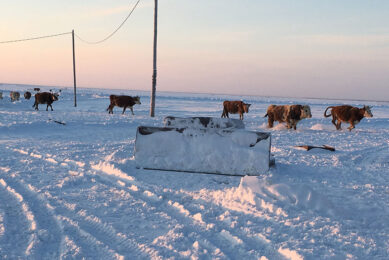Lumpy skin disease SE Europe contained

The mass vaccination of cattle implemented in south-eastern Europe successfully contained the outbreaks of lumpy skin disease in the region in 2015-16.
This is the main conclusion of an epidemiological analysis carried out by EFSA in cooperation with countries affected by the disease and those at risk.
This report follows EFSA’s scientific advice published in August 2016, recommending vaccination to minimise the number of lumpy skin disease outbreaks in regions already affected or at risk. “Despite the difficult epidemiological situation, all countries involved in the data collection have shown a high level of commitment and cooperation,” said Alessandro Broglia, veterinarian at EFSA. Closeness to affected farms and warm temperatures resulting in a higher presence of the insects that transmit the disease are among the factors responsible for the spread of the disease.
Recommendations
Experts made recommendations on how to improve data collection and analysis. They also recommended laboratory confirmation of suspected cases in vaccinated animals to differentiate the strains.
A disease of cattle
Lumpy skin disease is an infectious disease of cattle, which causes economic losses and occasionally is fatal. It is characterised by skin nodules. It was previously limited to southern and eastern Africa. After it was confirmed in Turkey in 2013, the virus spread through south-eastern Europe. As of 2016 the disease was detected in 7 European countries – Greece, Bulgaria, the Former Yugoslav Republic of Macedonia, Serbia, Albania, Montenegro, and Kosovo.
Working together
To produce this report, EFSA experts worked with competent authorities of Greece, Bulgaria, Albania, Serbia, Bosnia and Herzegovina, the former Yugoslav Republic of Macedonia, Montenegro, Turkey, Romania, Croatia, and Kosovo1. Further scientific advice will be provided at the beginning of 2018.
Join 13,000+ subscribers
Subscribe to our newsletter to stay updated about all the need-to-know content in the dairy sector, two times a week.










